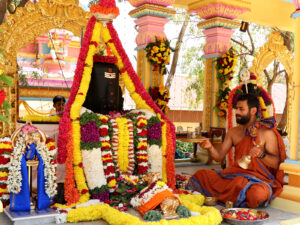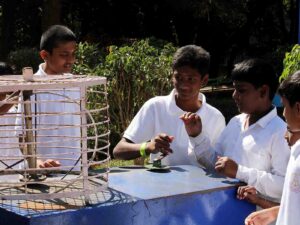The inaugural Navaratri celebration at Sri Sathya Sai Vaatsalyam, Uyyamballi, unfolded in a remarkable display of fervour, marked by an array of vibrant programs and festivities.
Grand Commencement: Unveiling the Divine Festivities
Golu Decoration and Abhishekam
The celebrations commenced with the enchanting Golu decoration, meticulously arranged by the sisters and brothers. Adorning the steps placed in the Sadashivam hall, this beautifully set-up display showcased dolls representing gods and stories, casting a divine aura that lingered throughout the entire Navratri festival.
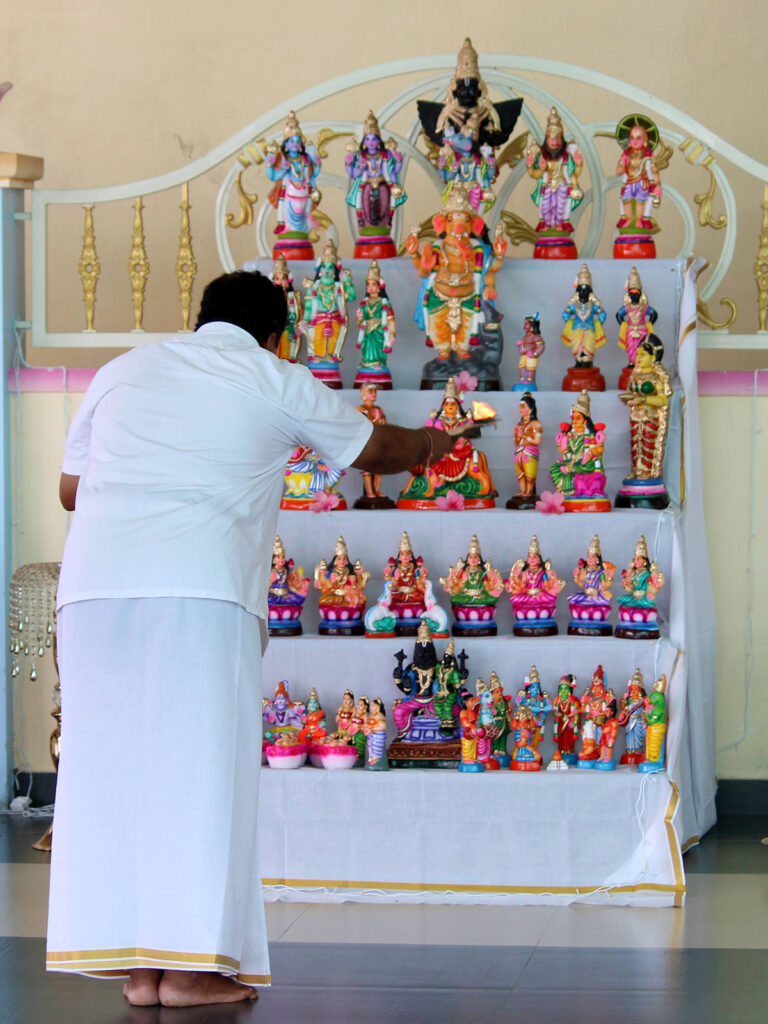

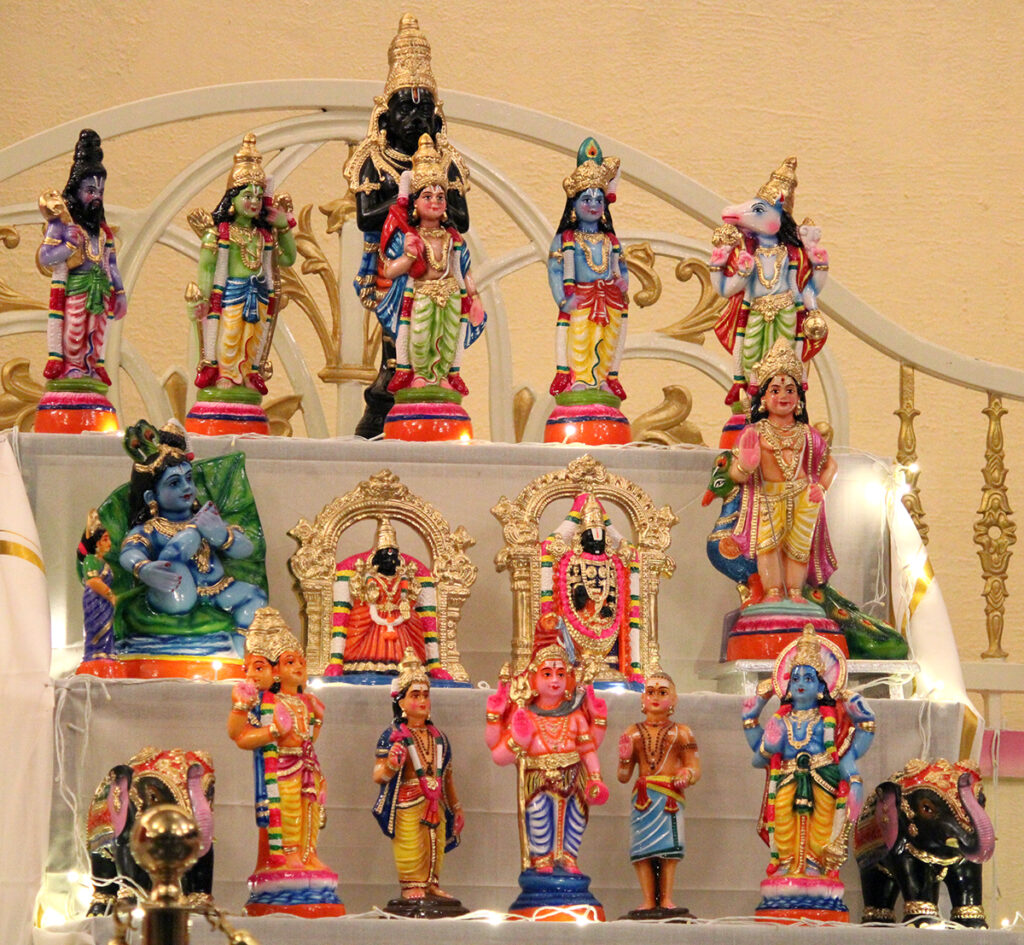
At the heart of this celebration was the essence of Vaatsalyaambika Devi, epitomizing motherly love, and Chandika Devi, epitomizing protection of all. The Sri Sathya Sai Vaatsalyam resonated with the spirit of devotion towards Vaatsalyaambika Devi and Chandika Devi, the adored loving mother and the guardian of all. Each day commenced with the offering of Gayatri prayers to Vaatsalyaambika Devi, Chandika Devi, and the Srichakra lingam, revered and showcased prominently on the dias of the Sadashivam hall. Everyday, Vaatsalyaambika Devi and Chandika Devi were offered the Gayatris:
Vaatsalyaambikaayai vidmahe
Matruroopayai dheemahi
Tanno devi prachodayaata
Kaatyaayanaaya vidmahe
Kanyakumaari dheemahi
Tanno durgi prachodayaata
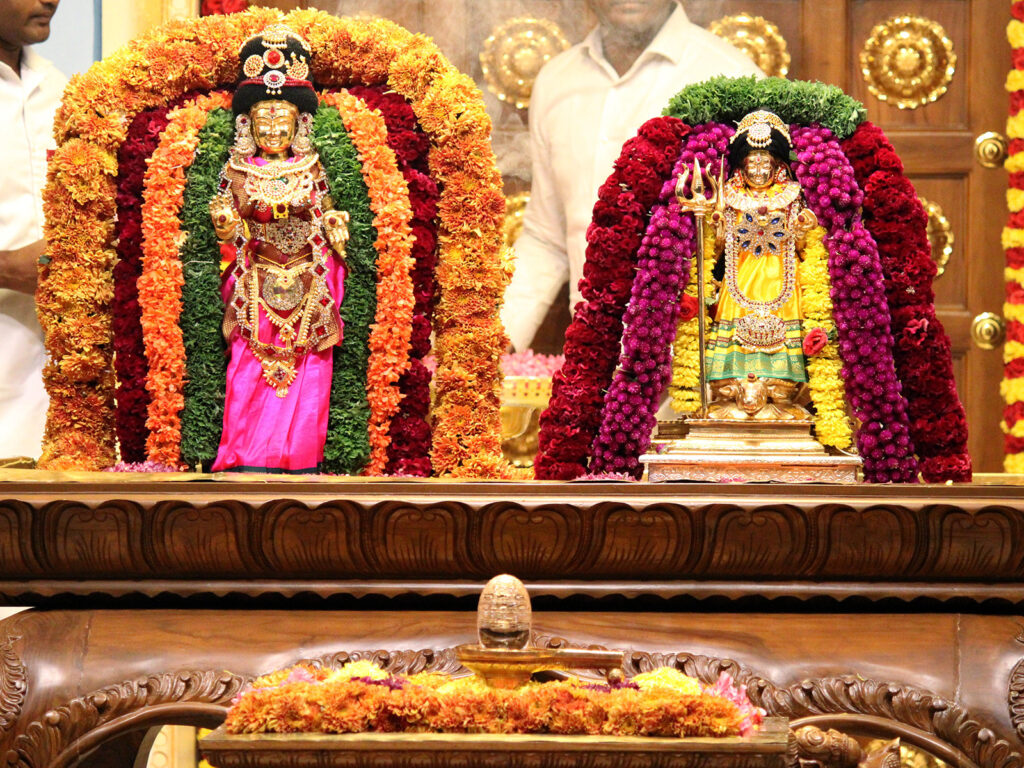
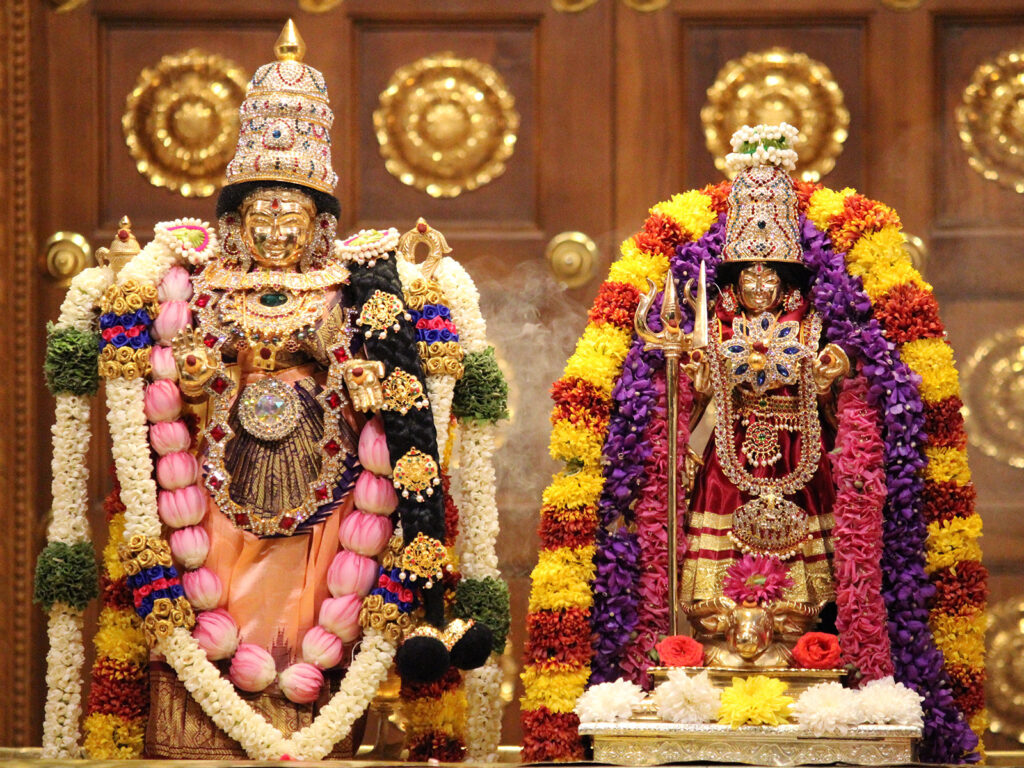
Rituals and offerings were integral to the daily proceedings. The chanting of Sri Lalitha Sahasranamam and Mahishasura Mardini Stotram reverberated through the venue, bringing blessings for the welfare of all. Families consecrated the deities Vaatsalyaambika Devi, Chandika Devi, and the Srichakra lingam with heartfelt abhishekam, anointing them with milk, curd, ghee, honey, an assortment of fruits and dry fruits, tender coconut, haridra choorna, kumkuma and chandana mixed water. The alankaram, a daily spectacular adornment, clothed the Goddesses in beautiful silk attire and adorned them with intricate ornaments. Adorned with a variety of flowers such as arali, lotus, and roses, the sight captivated all present.

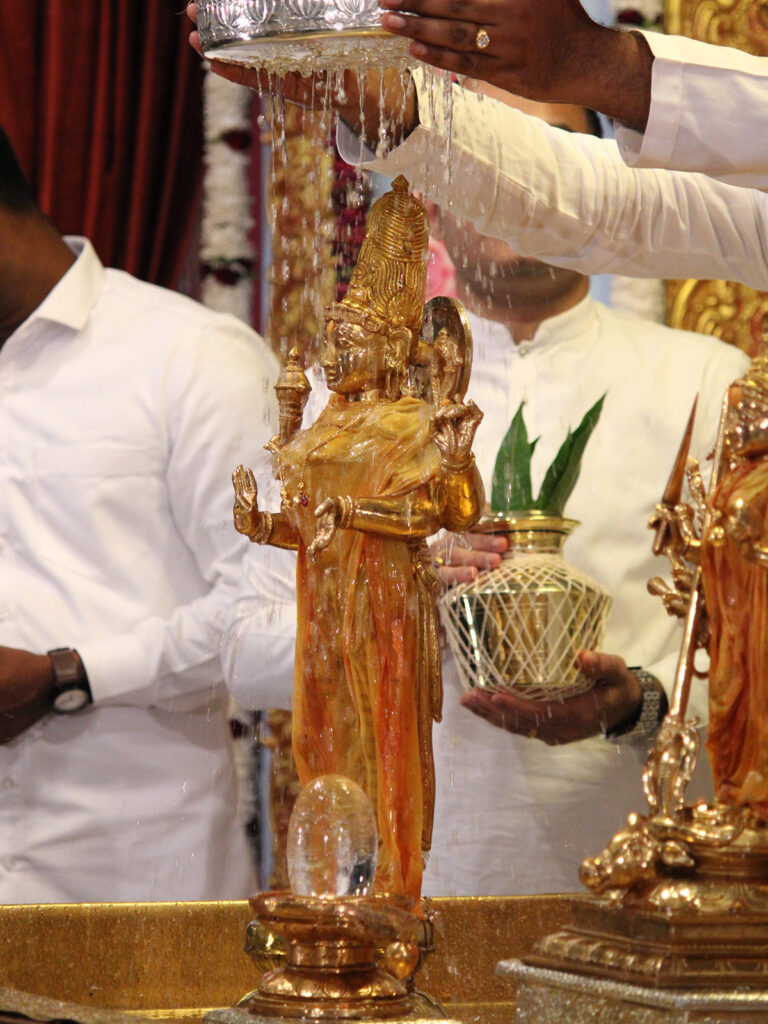
The cultural offering was not just about rituals, but also about fostering love and benevolence. The ambiance was filled with joy and divinity as Pushpa Archana, Kumkuma Archana, Tambulam, and the offering of sweet and savory Prasadam followed, offering the divine ‘bramhaarpanam’ chant, concluding with Aarti, kempaarati, and Maha Mangala Aarti.
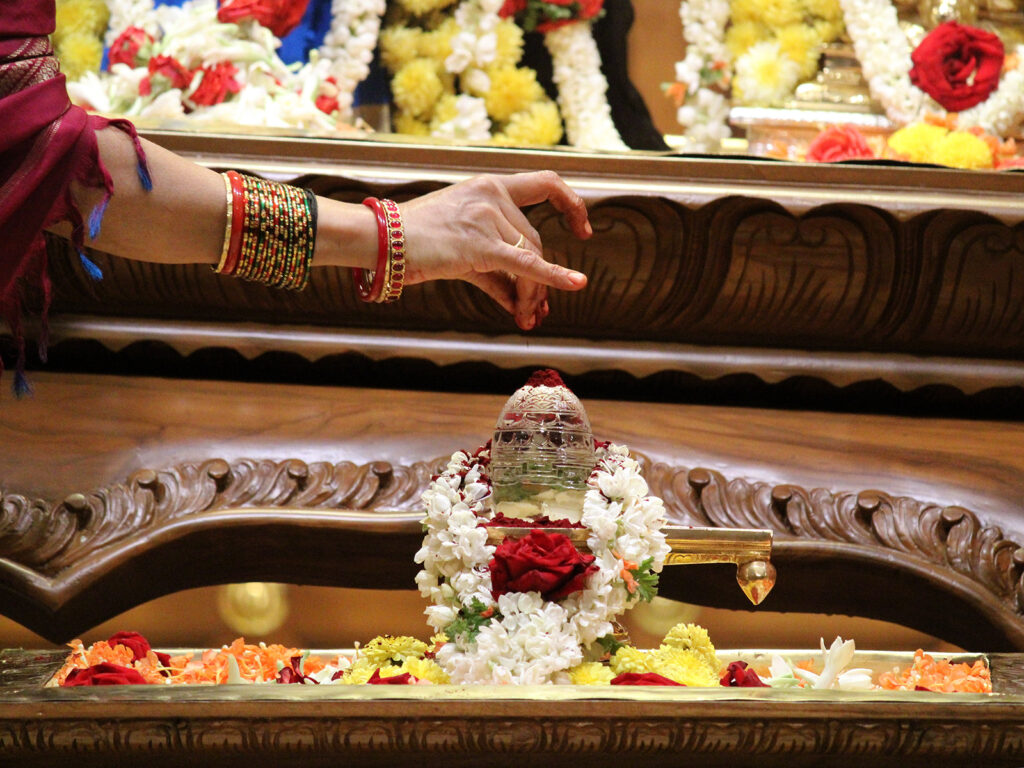
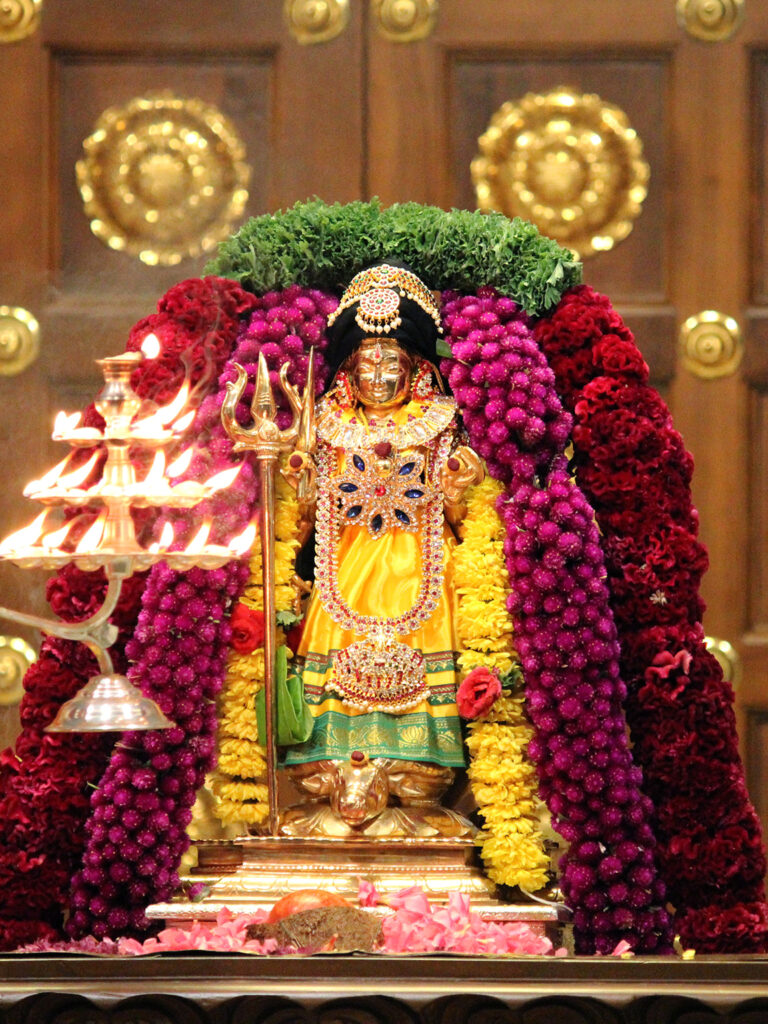
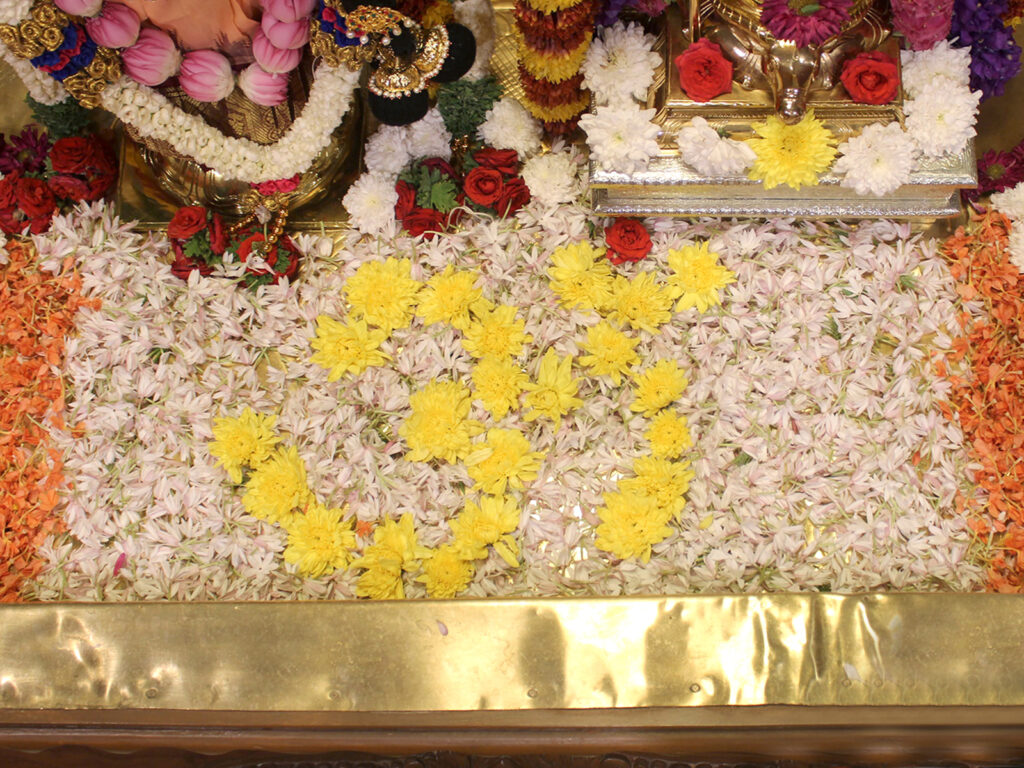
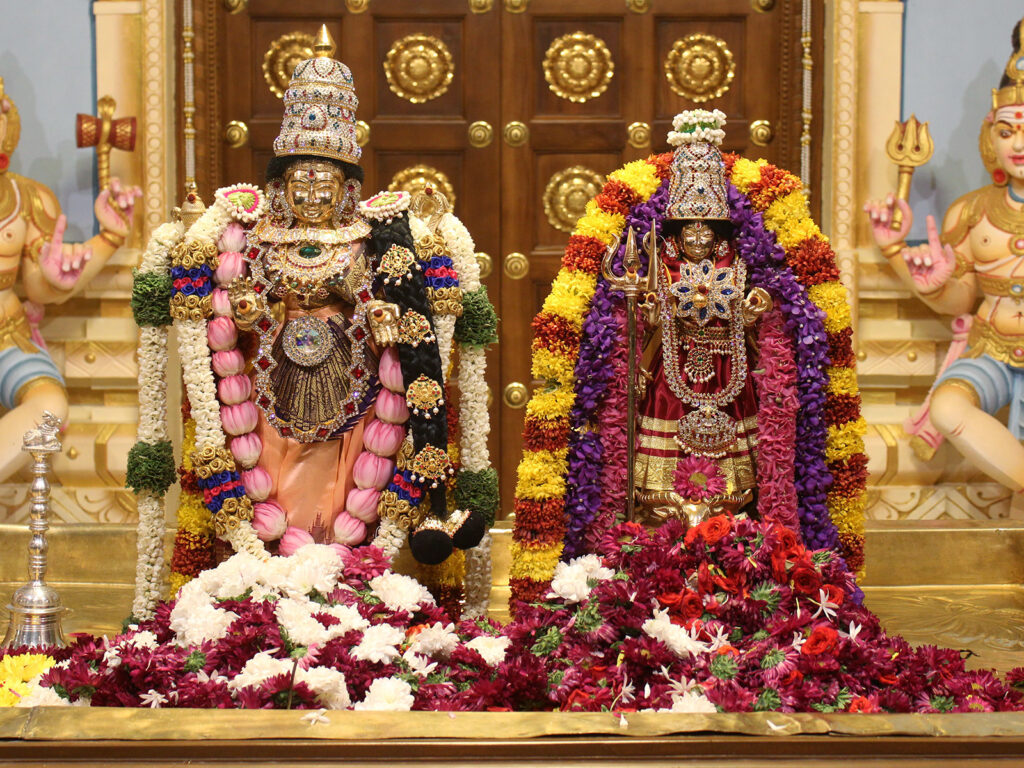
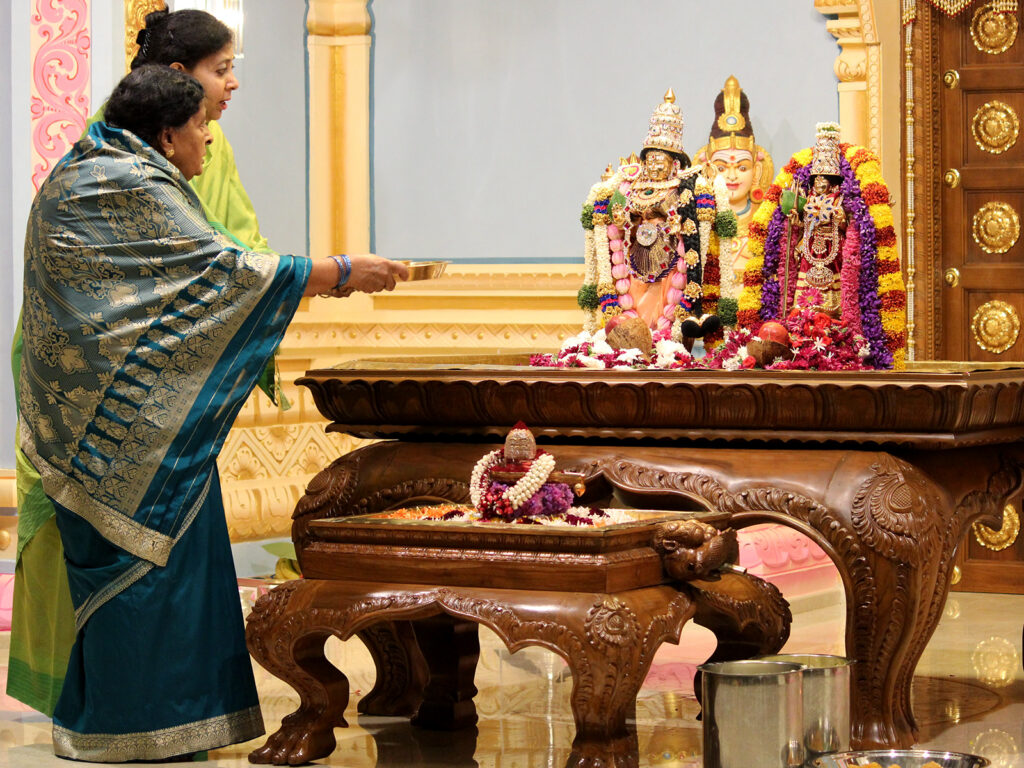
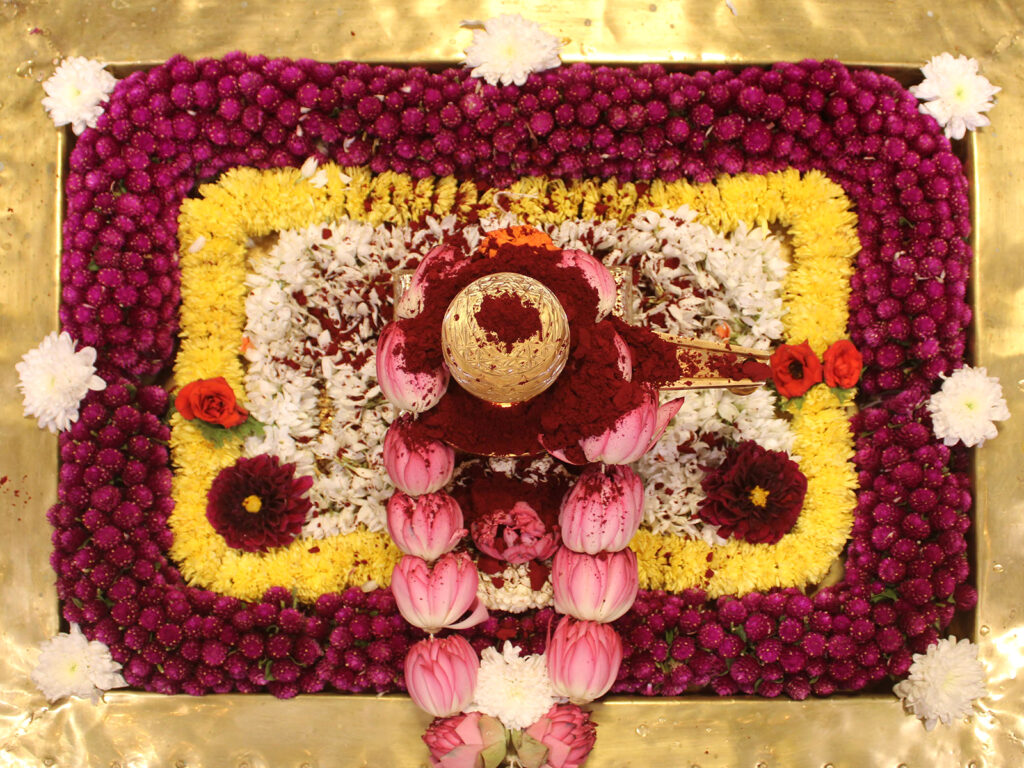

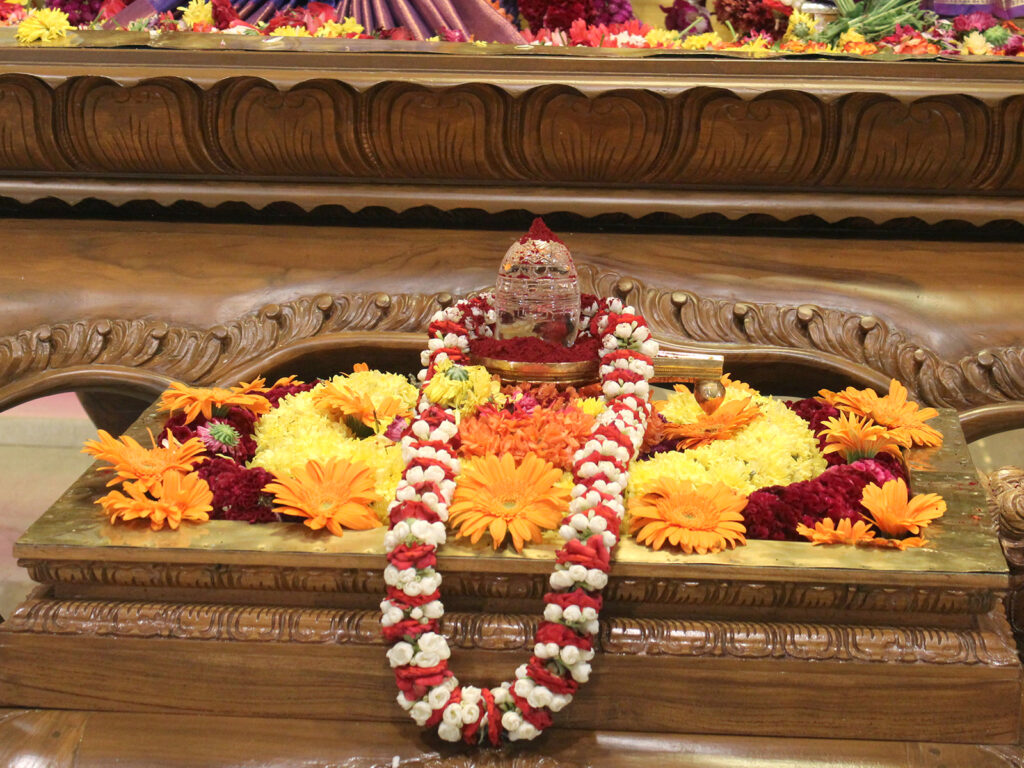
Sacred Homams and Pujas
The eighth day witnessed the fervent gana homam, ensuring smooth proceedings for the forthcoming Chandika Homa, Kalasha Pooja, and Pratishtapana. An intricate kolam and stage decorations added vibrancy to the pujas, while a symbolically decorated lamp represented the divine presence of the Goddess.
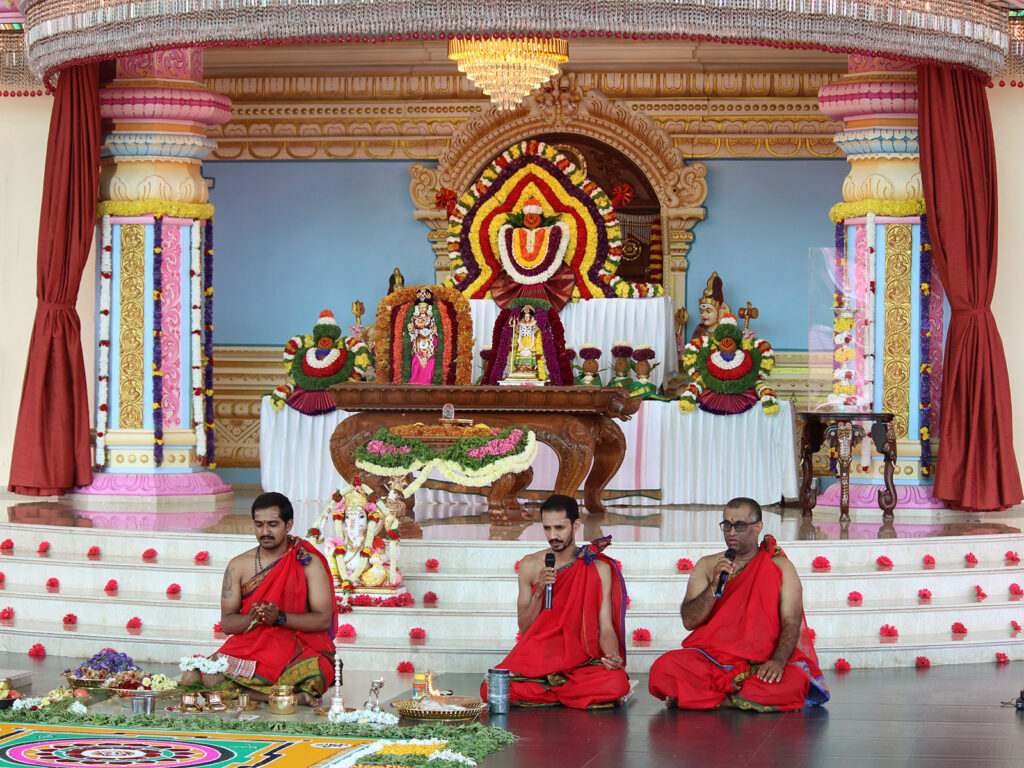
The evening session was highlighted by the priests’ collective chanting of the Durga Saptashati (Chandi parayana), enveloping the gathering in collective jubilation and spiritual bliss.
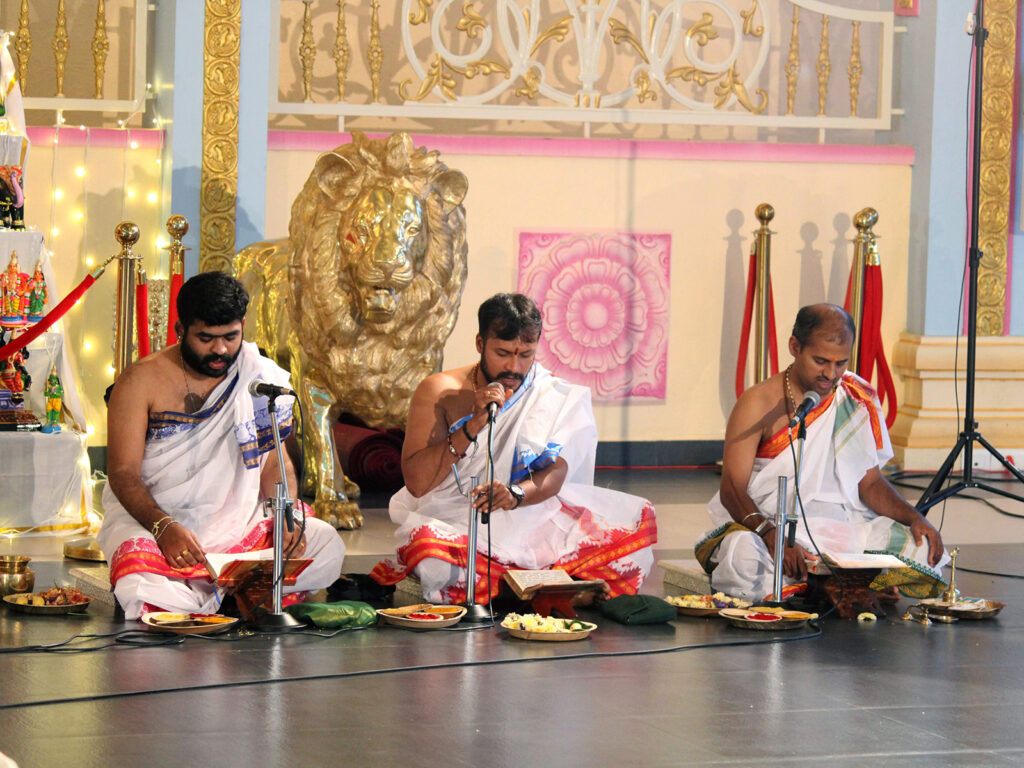
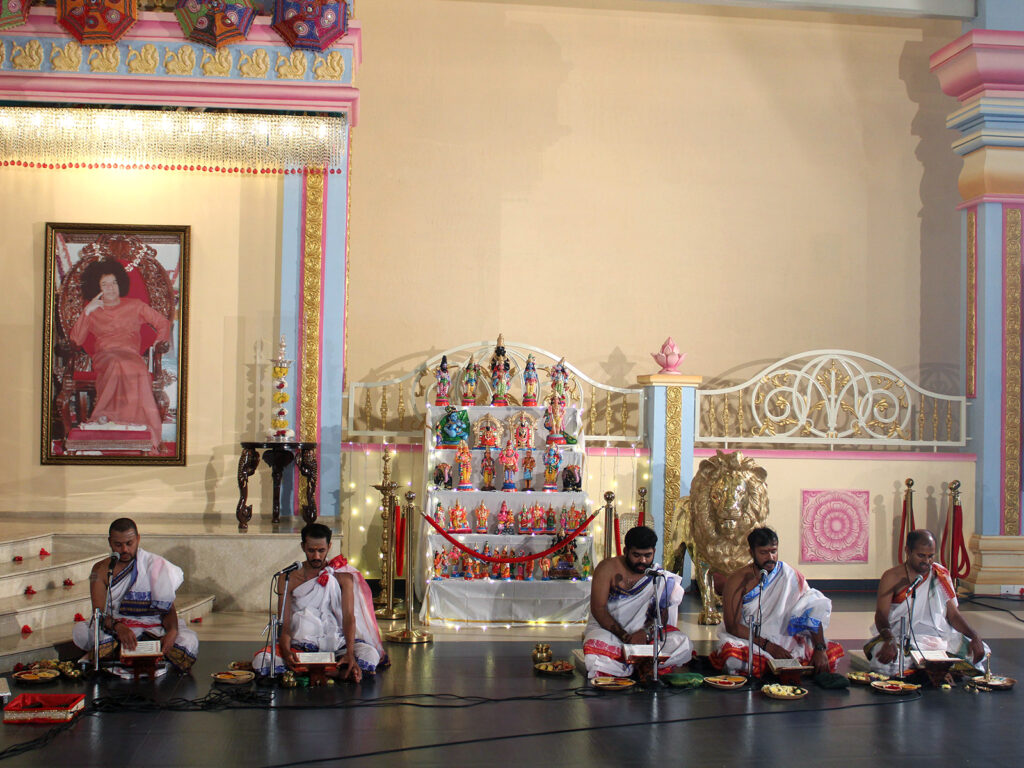

Day nine brought forth the Chandi Homa and Poornahuti in the morning and the Durga Pooja and Ashtavadhana Seva in the evening, brimming with divine fervor and filled with sacred offerings and chants such as Pushpa veda. A special puja for sisters celebrated them as embodiments of Devi in the morning. The ritual recognized their significance and cherished the divine essence within each one present.
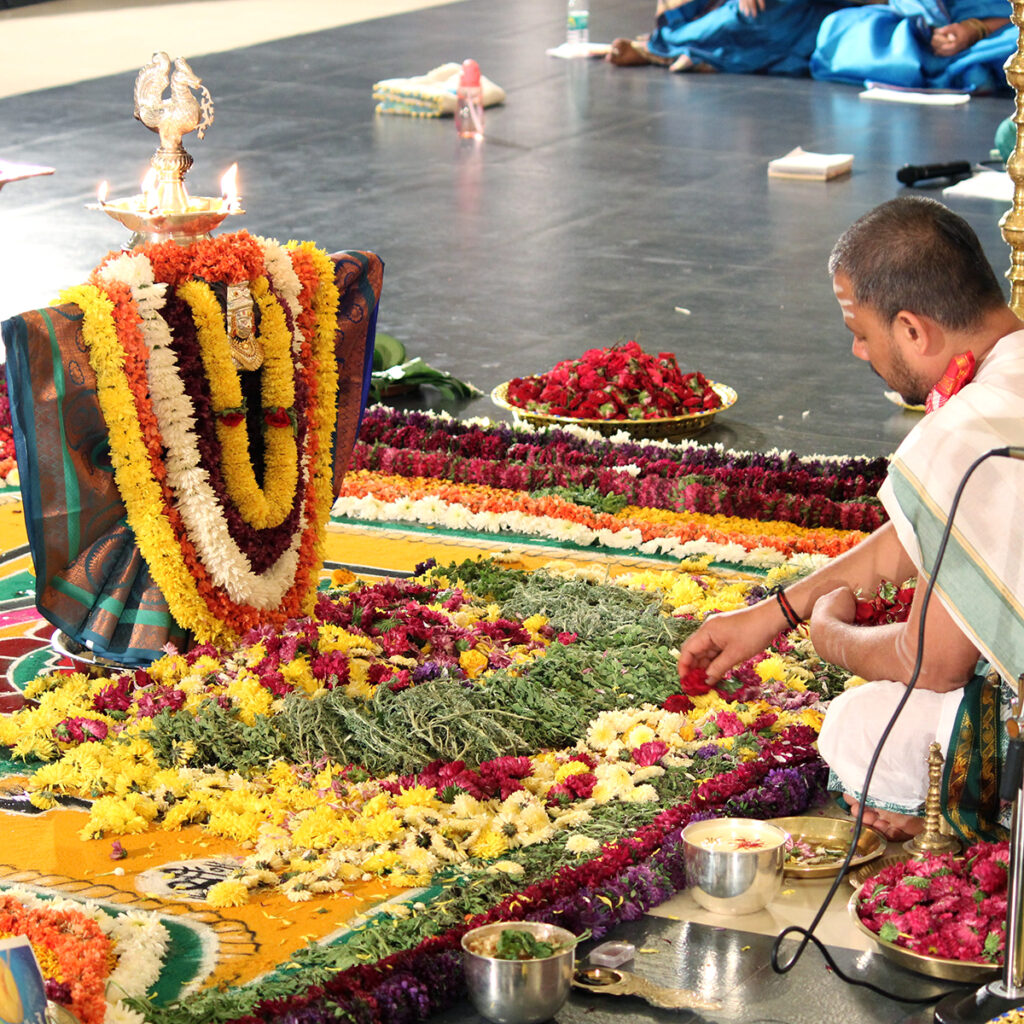
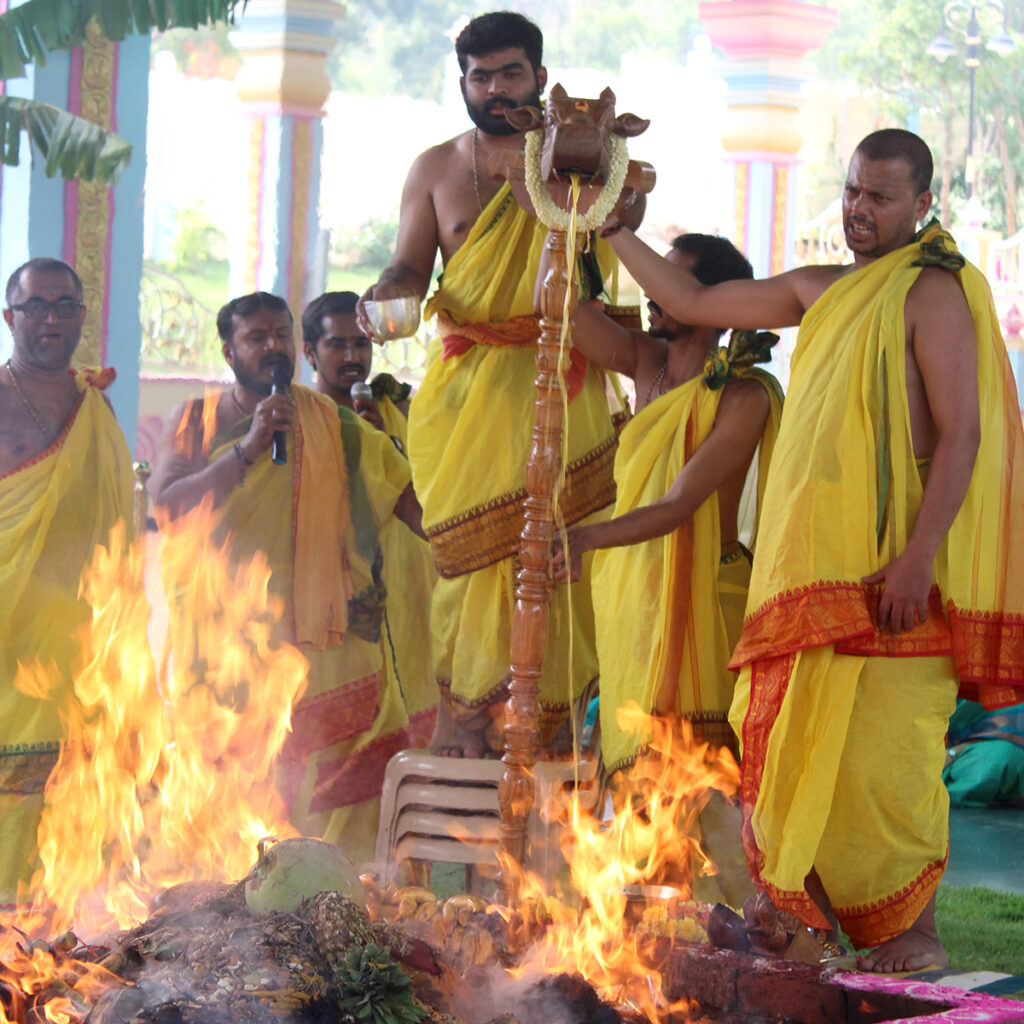
The Nakshaktra aarti, a cherished tradition, illuminated the surroundings as aarti from various lamps were offered to Durga devi. The pouring of consecrated water from the kalashas in the abhishekam, a grand spectacle in itself, graced the sacred space and revered the Devis and Lingam. The Ashtavadhana Seva is a sacred worship encompassing eight distinct forms of offering to the Goddess, including Veda Seva such as Sama Veda and Rig Veda, Nada Seva, Stotram Seva, and Keertana Seva. The evening concluded with Mangala Aarti and prasadam
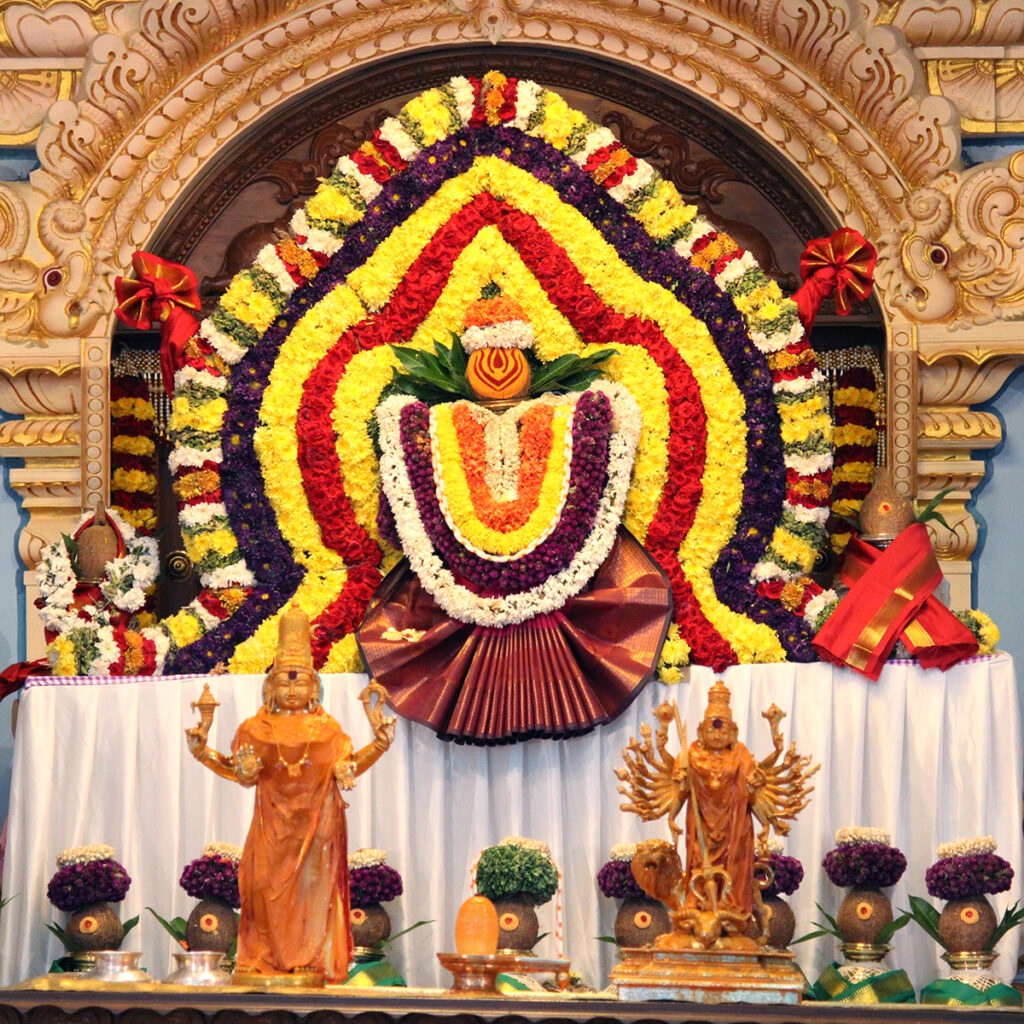
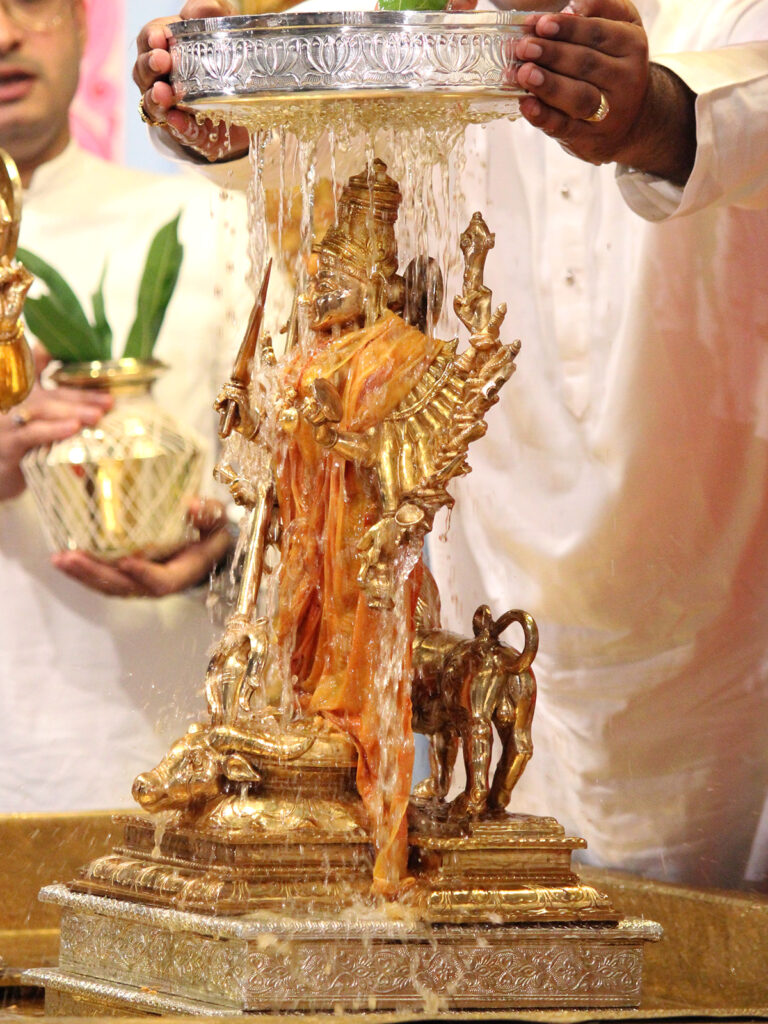
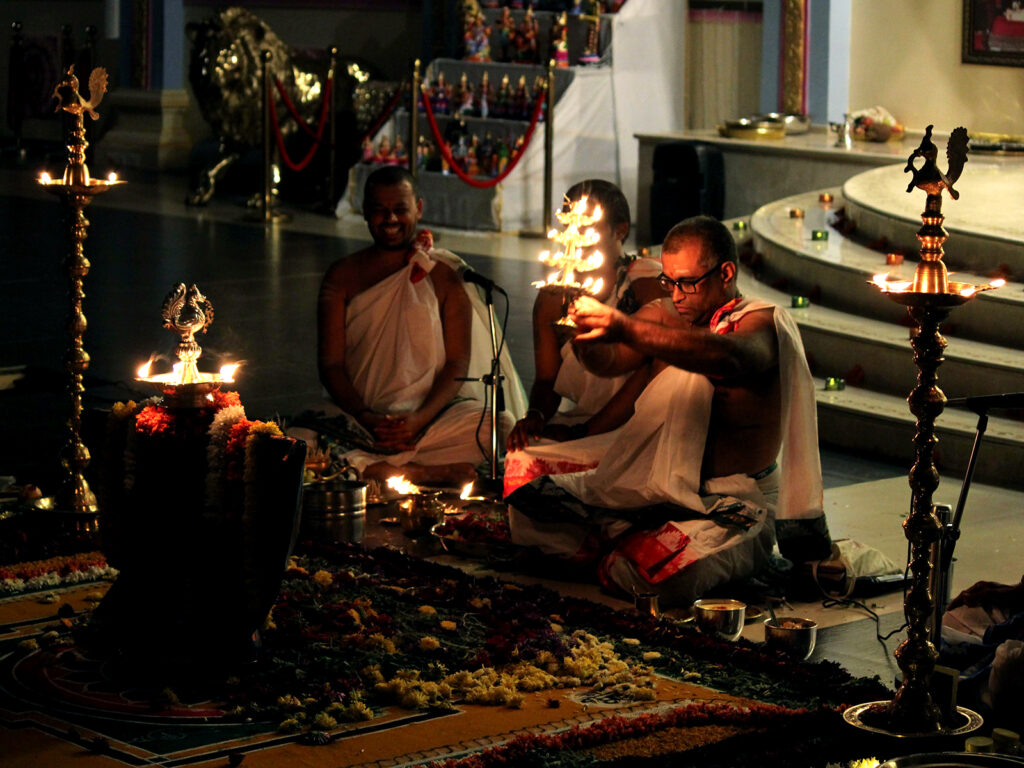
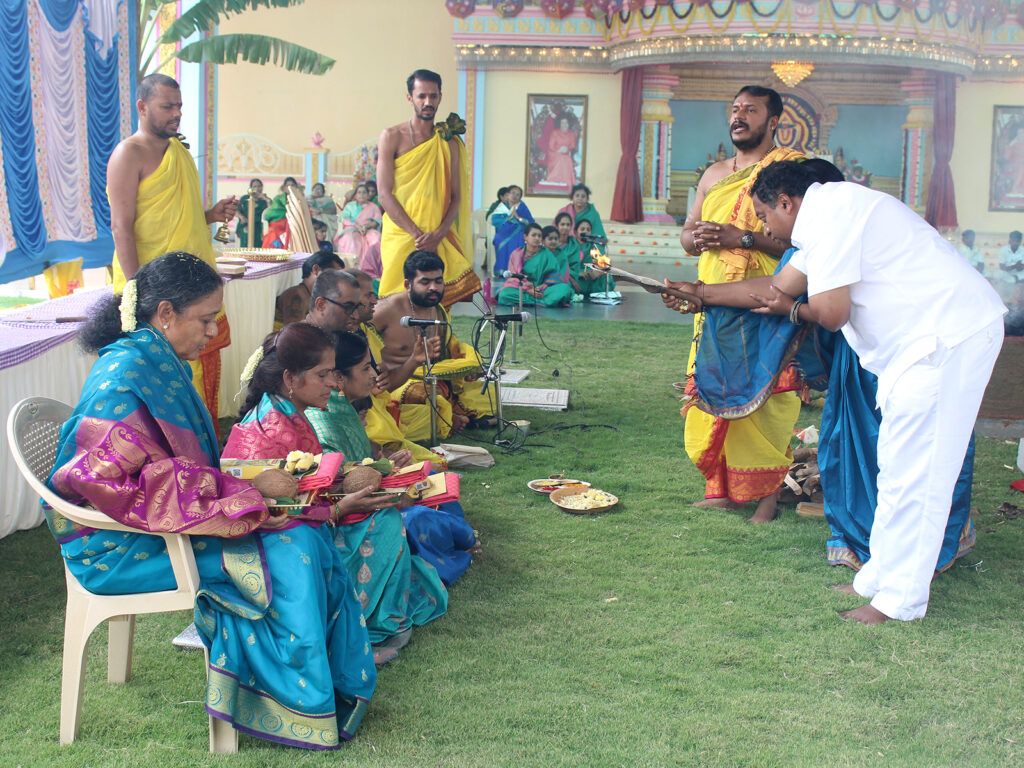
The felicitation of the priests and the Mangala Aarti marked the conclusion of the evening celebrations.
Culmination of Festivities: A Day of Reverence and Reflection
Vijayadashami, the grand finale of the Navratri festivities, commenced with the Aayudha puja, honoring the vehicles, including the Narayana Seva vehicle, symbolizing the devotion towards service and the divine.
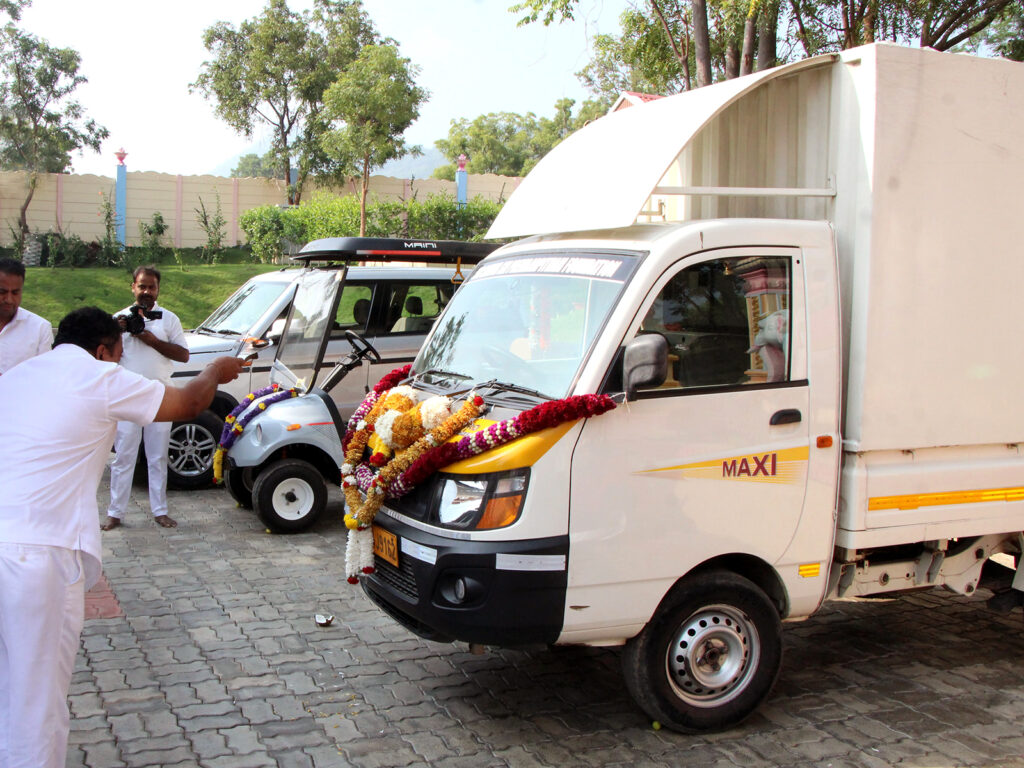
Brother Kumar presented a profound poem that celebrated the essence of Vaatsalyaambika Devi, accentuating her role as the destroyer of ‘Evil’, redefining the concept of ‘Devi’.
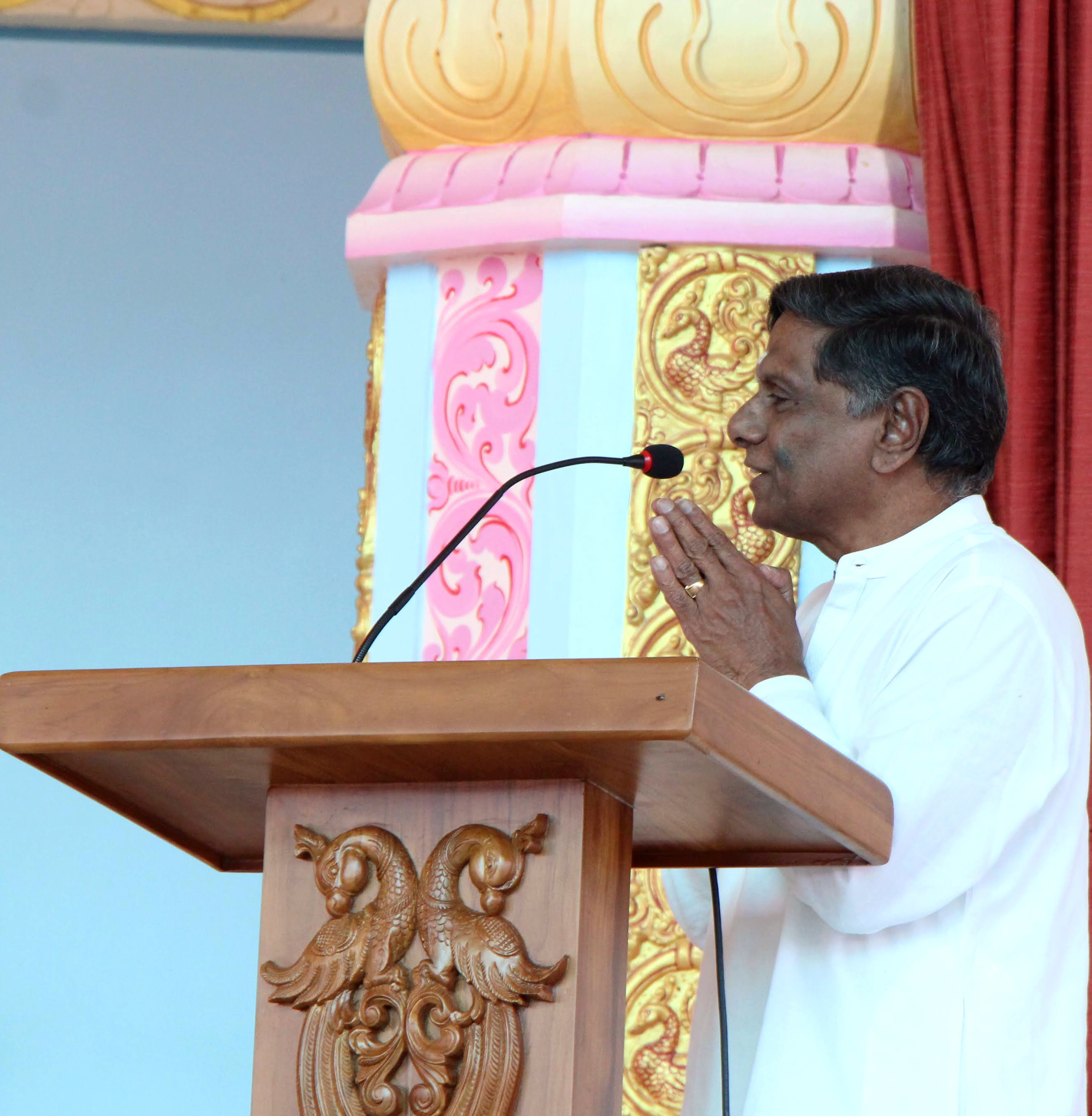
Under the noble banner of the Sri Sathya Sai Premaarpitham Foundation, the day witnessed the launch of an incredibly-equipped mobile hospital, the Sri Sathya Sai Kshema Dayini. The launch was accompanied by a puja for the Sri Sathya Sai Kshema Dayini vehicle. Dr. Gajanan Sabahith shared heartfelt prayers for the success of this service, enabling Sri Sathya Sai Vaidyalayam to offer timely, advanced medical care to a larger number of patients in the vicinity, with state-of-the-art features.
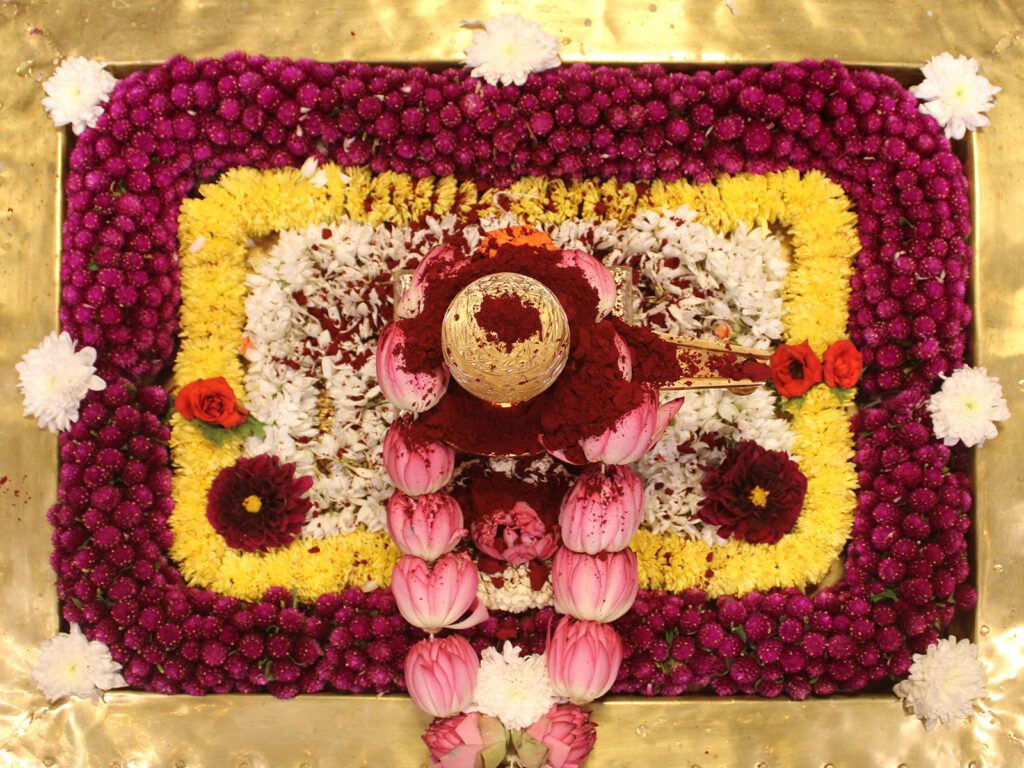

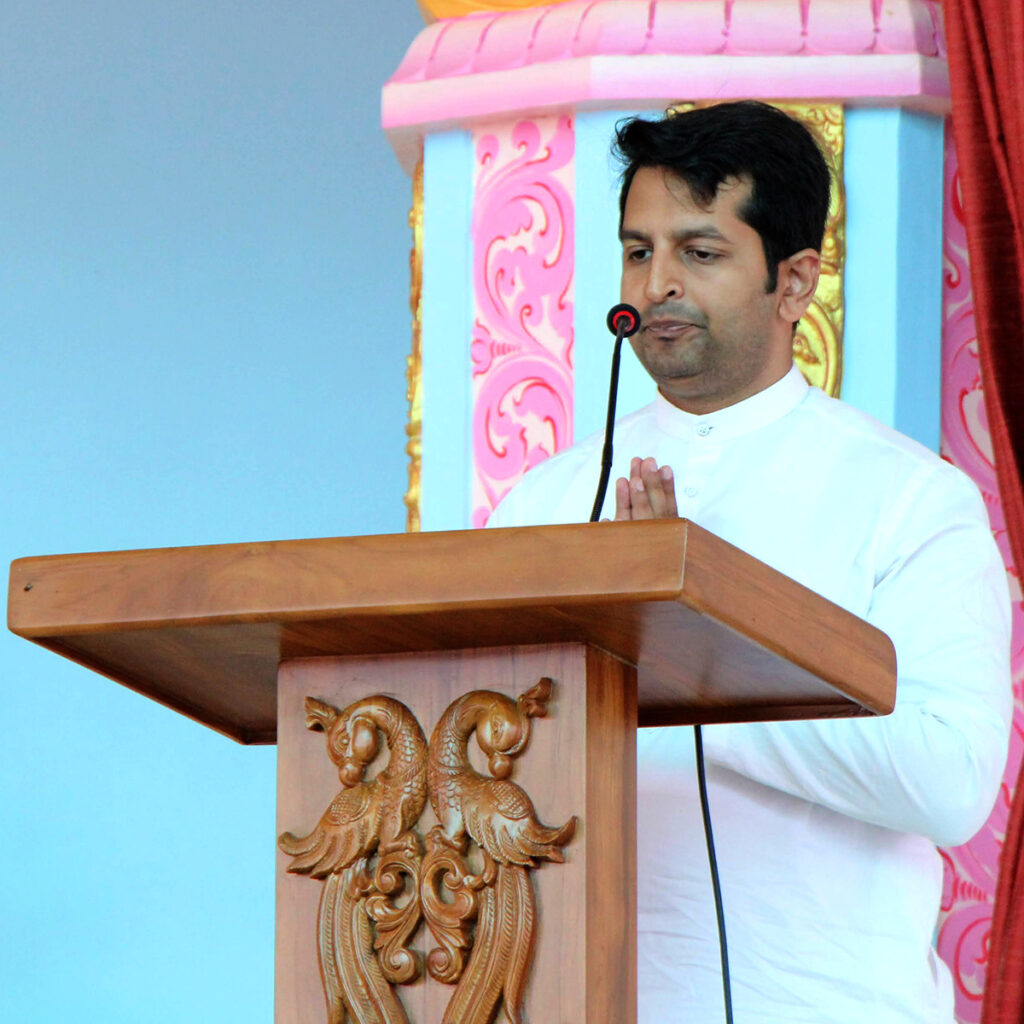
A Heartfelt Speech by Dr. Gajanan Sabahith
An update on the Sai Prema initiative, which ensures the provision of a wholesome breakfast to school-going children, revealed its expansion to two schools, benefitting over 400 children each morning. The initiative saw a remarkable 15 percent increase in attendance at the first school in Uyyamballi within a month of its commencement.
Nourishing Hearts and Minds: Sai Prema Breakfast Seva in Action
Next, was a speech by brother Sonukumar. Brother Sonukumar emphasized the profound notion that every earnest prayer, even if unspoken but felt within, is heard and answered by the Divine.
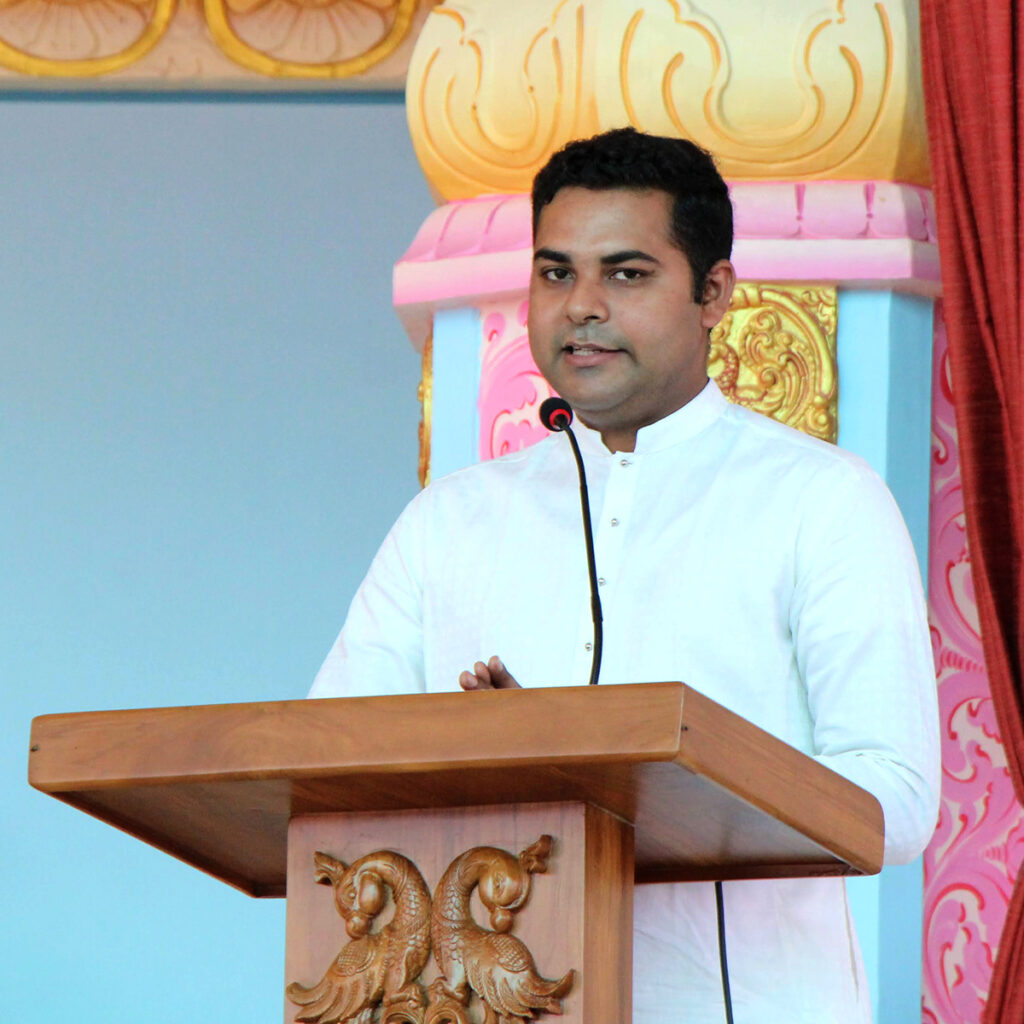
The thoughtful efforts of brother Sri Surya Narayan, who meticulously created a miniature model of Sri Sathya Sai Vaatsalyam displayed at Karyalayam, were felicitated.
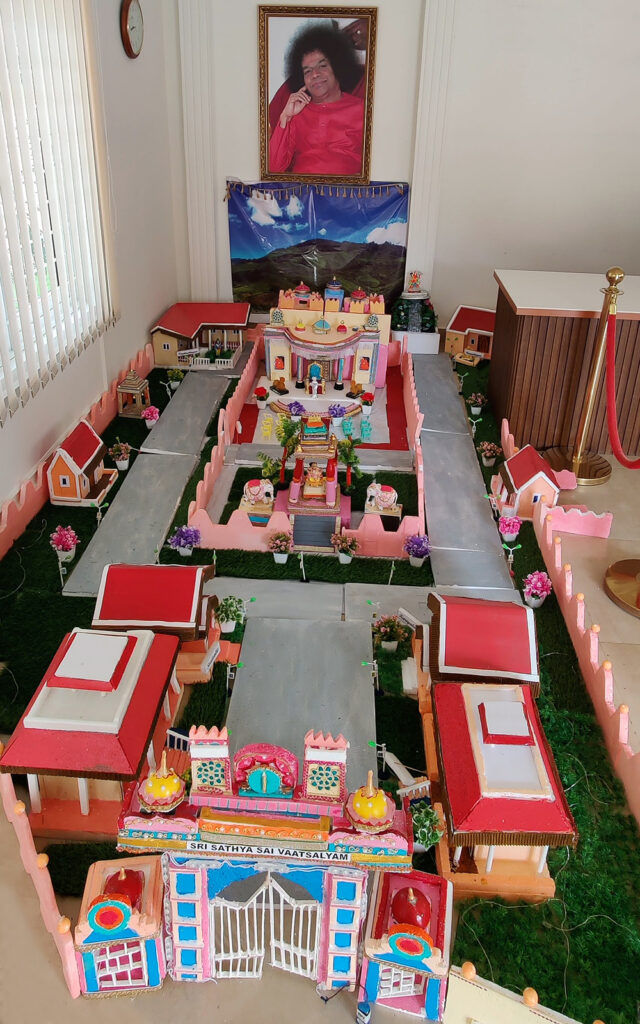
The day reached its cultural zenith with ‘Nrithya Samarpan,’ a Bharatnatyam dance recital by Aparna Krishnan, Sathvika Krishnan, and Sourabha Bhat. The performances paid homage to various deities, commencing with a dance dedicated to Lord Ganesha titled ‘Sri Ganesha Sharanam.’ Following this, the subsequent three dances embodied the essence of ‘Iccha Shakti’, ‘Kriya Shakti’, and ‘Jyana Shakti‘, and were Sri Rajarajeshwari Ashtakam, Mahalakshmi Ashtakam, and the Shringapuradeeshwari Sharade kriti.
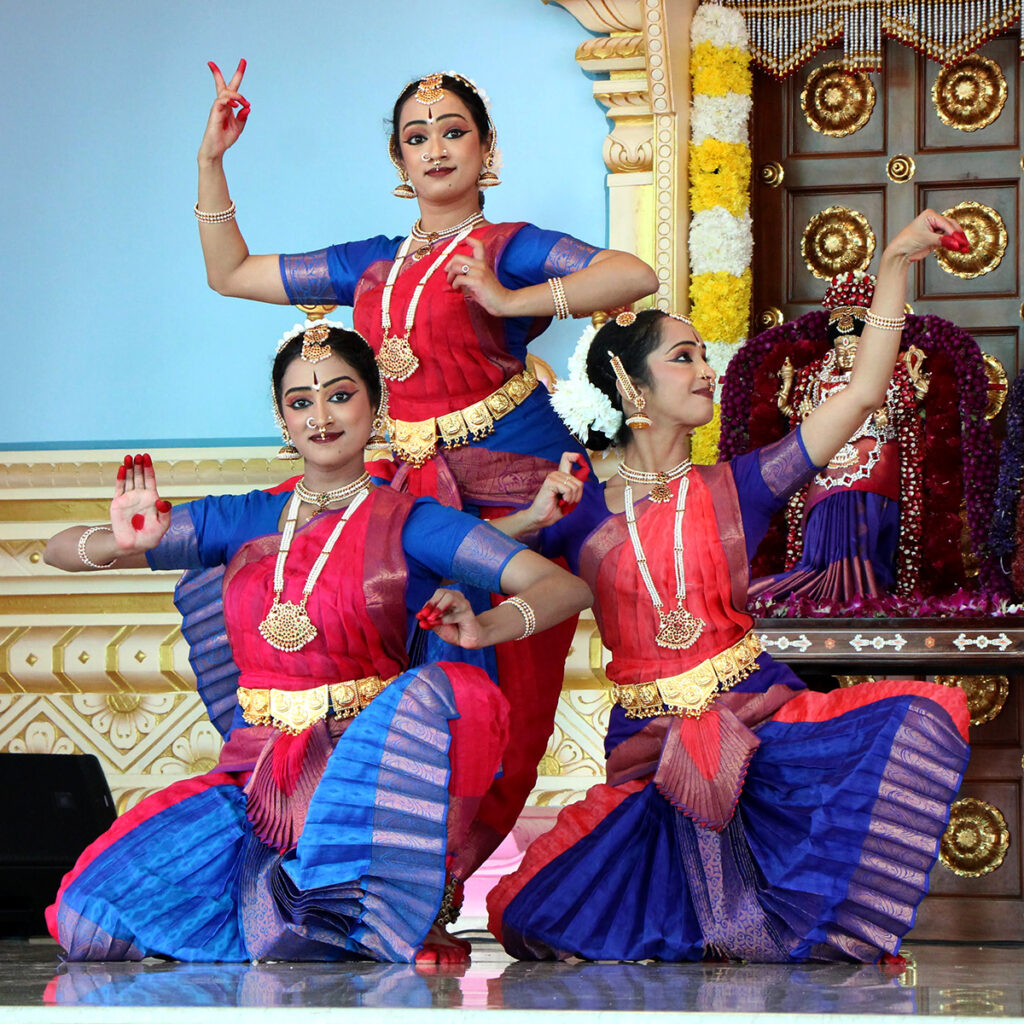
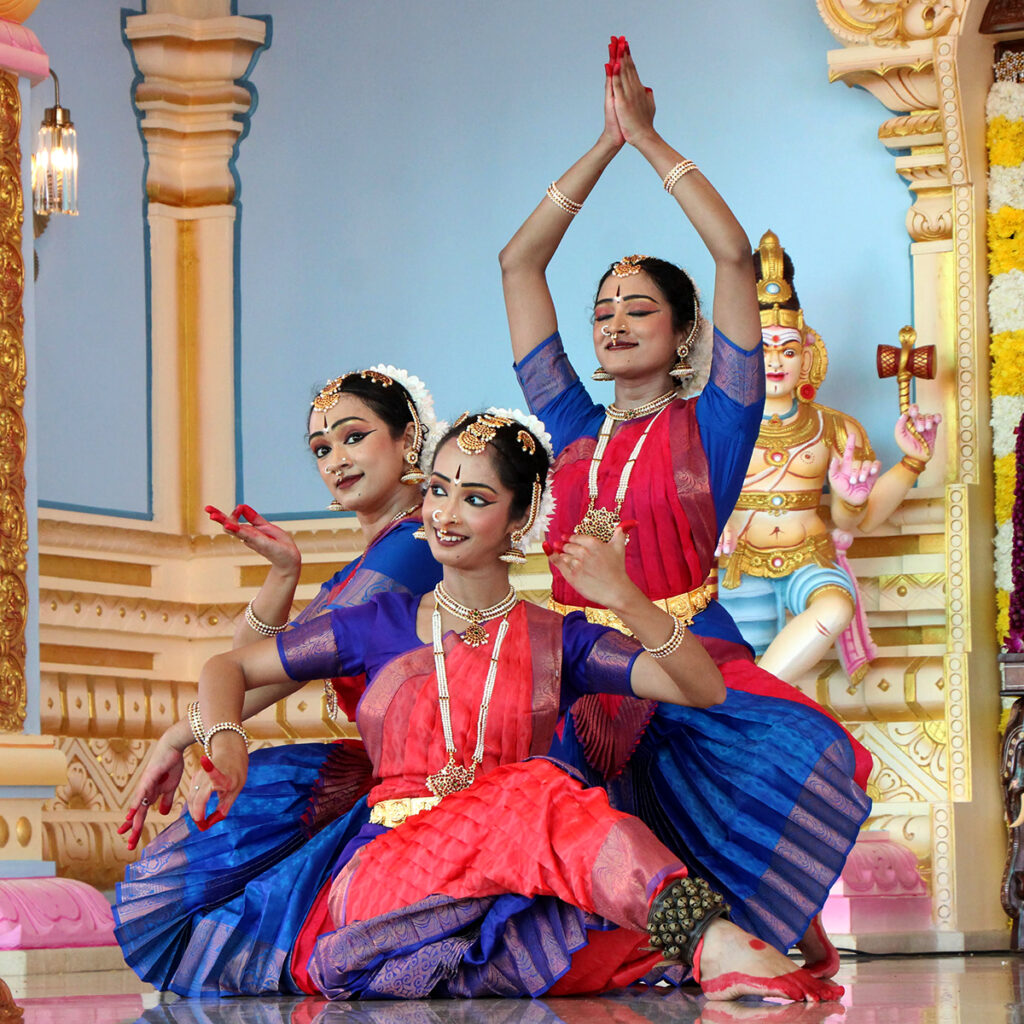
The Navratri and Dusshera Celebrations at Sri Sathya Sai Vaatsalyam were not just a display of devotion, but an amalgamation of cultural richness, spiritual awakening, and benevolent initiatives, leaving everyone captivated by the divine beauty of Vaatsalyaambika Devi, Chandika Devi, and Srichakra lingam, and instilling a sense of spiritual fulfillment and divine blessings.



